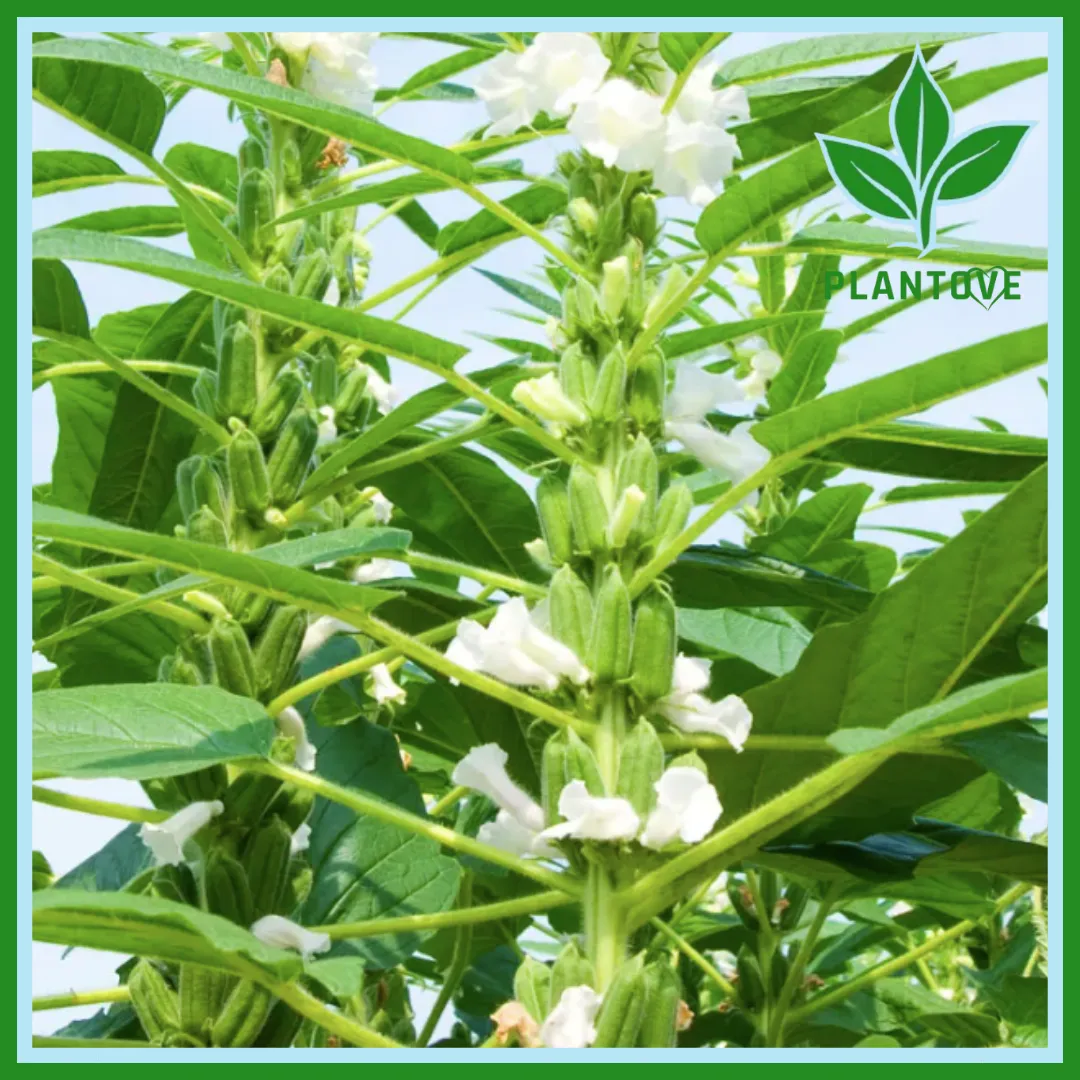The sesame plant, valued for its seeds and oil, has been cultivated for thousands of years due to its unique benefits. Known for its adaptability, this drought-resistant plant thrives in warm climates, making it a suitable choice for various regions in the United States. This article will explore the essentials of growing, caring for, and utilizing the sesame plant.
Understanding the Sesame Plant
The sesame plant, Sesamum indicum, is a flowering plant native to Africa and India. It is prized for its seeds, which are small, nutty-flavored, and widely used in culinary and medicinal applications. Sesame seeds are a staple in Middle Eastern, Asian, and Mediterranean cuisines, and the oil derived from these seeds is highly valued for its flavor and health benefits.
Ideal Growing Conditions for Sesame
The sesame plant is relatively easy to grow in the right conditions. Here’s a look at the environmental factors essential for a thriving sesame crop:
- Climate: Sesame plants thrive in hot, dry climates. They are drought-resistant and require minimal water once established, making them ideal for regions with dry summers.
- Sunlight: These plants need full sun exposure for optimal growth. Place them in a location where they receive at least 6-8 hours of direct sunlight daily.
- Soil Requirements: Sesame plants prefer well-draining, loamy soil rich in organic matter. A slightly acidic to neutral pH, between 6.0 and 7.0, is ideal.
- Growing Zone: In the United States, sesame plants grow best in USDA Hardiness Zones 9-11. However, with the right care, they can be grown as annuals in cooler zones.
How to Plant Sesame Seeds
Planting sesame seeds is straightforward. Here’s a step-by-step guide:
- Choose the Right Time: Plant sesame seeds in late spring or early summer when the soil temperature is above 70°F.
- Prepare the Soil: Loosen the soil and mix in compost to improve drainage and nutrient content.
- Planting Depth: Sow sesame seeds about 1/4 inch deep, spacing them approximately 6-8 inches apart in rows 24 inches apart.
- Watering: Keep the soil moist until the seeds germinate, which typically takes 1-2 weeks. Once established, sesame plants are drought-tolerant.
Sesame Plant Care
Proper care ensures a healthy and productive sesame plant. Here are some care tips:
- Watering: While sesame plants are drought-resistant, they require consistent moisture during the early growth stage. Water deeply once a week, allowing the soil to dry slightly between waterings.
- Fertilizing: Use a balanced fertilizer during planting and a nitrogen-rich fertilizer once the plants are established to promote leafy growth and flowering.
- Pruning: Sesame plants generally do not require much pruning. However, removing any dead or damaged leaves can help promote healthy growth.
- Mulching: Applying a layer of mulch around the base of the plant helps retain moisture and prevents weed growth.
Sesame Plant Problems and Solutions
Though relatively hardy, sesame plants can face certain challenges:
- Pests: Aphids, whiteflies, and leafhoppers may occasionally infest sesame plants. Use organic insecticides or introduce natural predators, like ladybugs, to manage these pests.
- Diseases: Fungal diseases, such as leaf spot and root rot, can affect sesame plants in overly moist conditions. Ensure proper spacing, avoid overhead watering, and keep the soil well-drained to prevent fungal growth.
- Weather Stress: Prolonged exposure to cold temperatures can stunt growth or kill young sesame plants. In cooler regions, consider planting sesame in pots to easily bring them indoors when temperatures drop.
Harvesting Sesame Seeds
Harvesting sesame seeds is an exciting process, as you’ll finally see the fruits of your labor. Here’s how to harvest sesame seeds:
- Timing: Sesame plants are ready for harvest when the leaves begin to yellow, and the seed pods turn brown, typically 90-120 days after planting.
- Drying: Cut the stems and hang them upside down in a dry, well-ventilated area to allow the seed pods to dry thoroughly.
- Collecting Seeds: Once dried, gently shake or tap the pods to release the sesame seeds. Store the seeds in an airtight container for long-term use.
Sesame Plant Uses
Sesame seeds have a wide range of uses, both culinary and medicinal:
- Culinary Uses: Sesame seeds are used in cooking, baking, and making tahini, a popular Middle Eastern paste. Sesame oil is also extracted from the seeds and is commonly used in cooking due to its high smoke point and rich flavor.
- Nutritional Value: Sesame seeds are rich in healthy fats, protein, and various essential nutrients like calcium, magnesium, and iron.
- Medicinal Uses: Sesame oil is often used in traditional medicine for its anti-inflammatory and antioxidant properties. It is believed to support skin health and improve heart health when consumed in moderation.
FAQs on the Sesame Plant
Is Sesame an Annual or Perennial Plant?
In warmer climates (Zones 9-11), sesame is grown as a perennial. However, it is often treated as an annual in cooler climates where it does not survive winter frosts.
Does Sesame Grow Best in Sun or Shade?
Sesame plants require full sun for optimal growth. Ensure they receive at least 6-8 hours of direct sunlight each day.
How Do You Care for Sesame Plants in Winter?
In regions where winter temperatures drop significantly, bring potted sesame plants indoors or grow them in greenhouses. Outdoor plants may not survive frost and should be replanted each spring in cooler climates.
How Does Sesame Differ from Other Seed-Producing Plants?
Compared to other oilseed plants, sesame has higher drought resistance and requires less water once established. Its adaptability to warm, dry conditions makes it unique among other seed-producing crops.
Where Do Sesame Seeds Come From?
Sesame seeds come from the sesame plant, Sesamum indicum, which produces seed pods. These pods dry out and burst open, releasing the seeds when they are ready for harvest.
The Benefits of Growing Sesame Plants
Growing sesame plants provides several benefits, especially for gardeners in warm climates:
- Drought Tolerance: Sesame’s ability to withstand dry conditions makes it a practical crop for regions with limited water resources.
- Nutritional Seeds: Sesame seeds are rich in essential nutrients, providing a healthy food source.
- Low Maintenance: Once established, sesame plants require minimal care, making them suitable for gardeners of all experience levels.
Conclusion
The sesame plant is a versatile, resilient, and rewarding plant to grow in home gardens. From its nutritional seeds to its attractive flowers, the plant offers numerous benefits. By providing the right conditions and care, you can enjoy a bountiful sesame harvest each year.

